Introduction to Optical Components
Optical components are essential elements in the field of optics and photonics, enabling the manipulation and control of light in various applications. These components play a crucial role in optical systems, allowing for the generation, transmission, and detection of light. From lenses and mirrors to filters and prisms, optical components come in diverse forms and serve different functions. Understanding the basics of optical components is fundamental to harnessing the power of light in fields such as telecommunications, medicine, astronomy, and imaging.
Optical components are designed to interact with light, allowing engineers and researchers to shape, direct, and manipulate light for specific purposes. These components are used in a wide range of applications, from simple optical systems like eyeglasses to complex laser systems used in scientific research and industrial processes. By understanding the principles and characteristics of optical components, one can effectively design, optimize, and utilize optical systems for various purposes.
In the following sections, we will explore in more detail the different types of optical components, their working principles, manufacturing processes, key selection factors, and their impact in various industries. By delving into these topics, we will gain a comprehensive understanding of optical components and their significance in modern technologies. Let’s begin our exploration of optical components with a closer look at lenses and their applications.
Types of Optical Components
The photonics industry is a rapidly growing field that deals with the generation, manipulation, and detection of light. The industry relies on various optical components to create, control, and transfer light signals. In this blog, we will discuss all the types of components used in the photonics industry.
1. Lenses

Lenses are optical components that are used to focus light. They can be made of glass, plastic, or other materials and come in different shapes and sizes. Lenses can be used to correct or change the path of light, making them essential components in cameras, microscopes, and other optical instruments.
There are two main types of lenses – convex lenses and concave lenses. Convex lenses are curved outward and are used to focus light, while concave lenses are curved inward and are used to spread light.
2. Mirrors

Mirrors are reflective optical components that are used to redirect light. They are used in a variety of applications, such as laser systems, telescopes, and rear-view mirrors in vehicles. Mirrors can be made of glass, metal, or other reflective materials and can be flat or curved.
3. Prisms
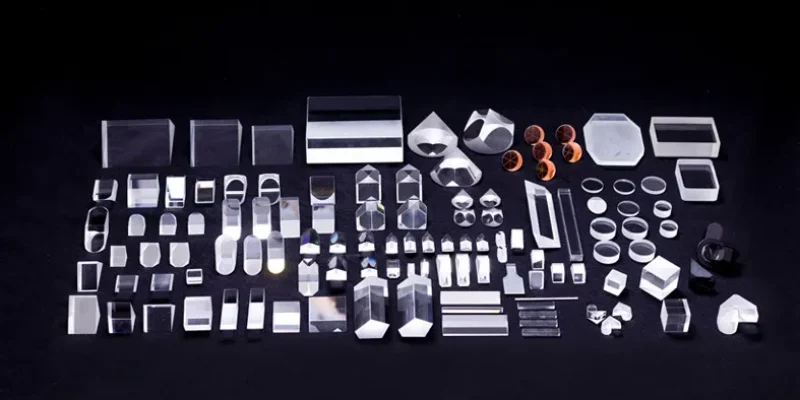
Prisms are triangular optical components that are used to split light into component colors. They are commonly used in spectrometers, polarimeters, and other optical instruments. Prisms are made of glass, plastic, or other materials and come in different shapes and sizes.
4. Filters

Filters are optical components that are used to modify the characteristics of light. They can be used to block, absorb, or pass certain wavelengths of light. Filters are commonly used in cameras, microscopes, and other optical instruments to improve image quality and control light intensity.
5. Windows
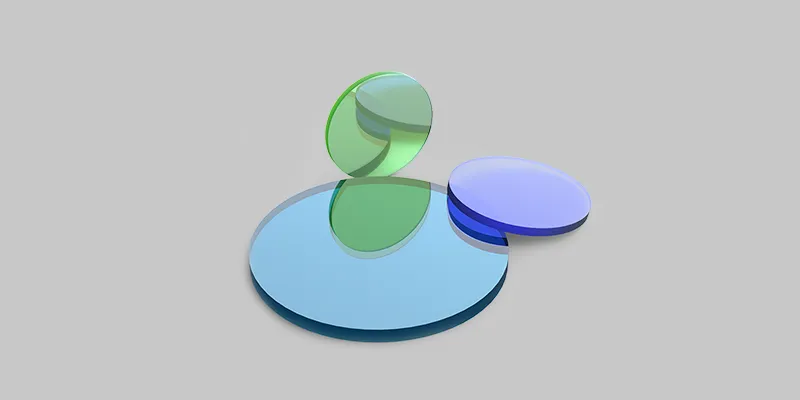
6. Polarizers
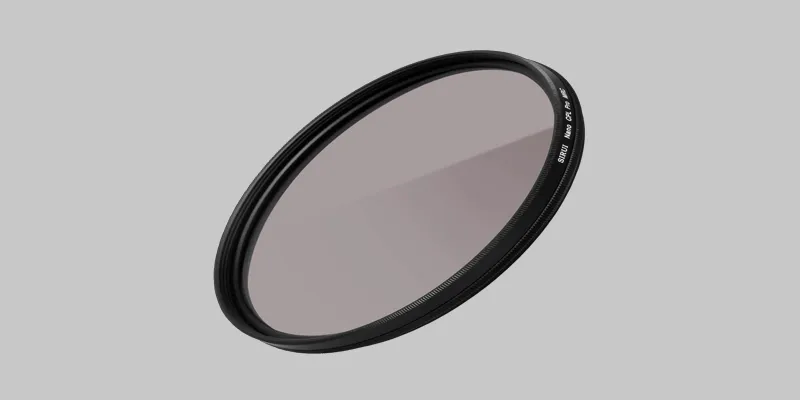
7. Waveplates

8. Gratings

9. Diffusers
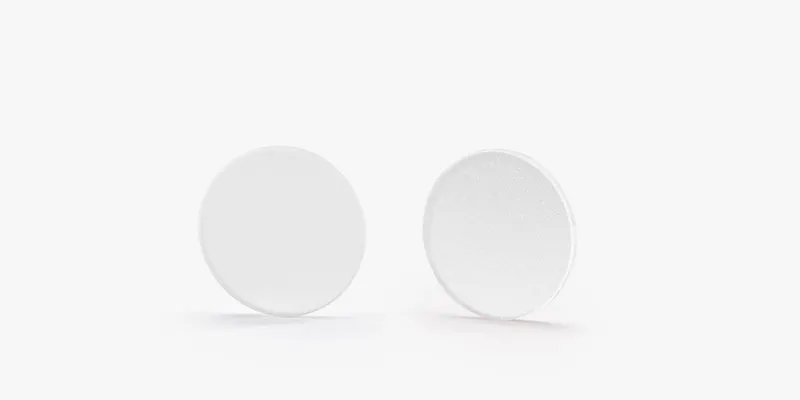
10. Beamsplitters

11. Fiber Optics
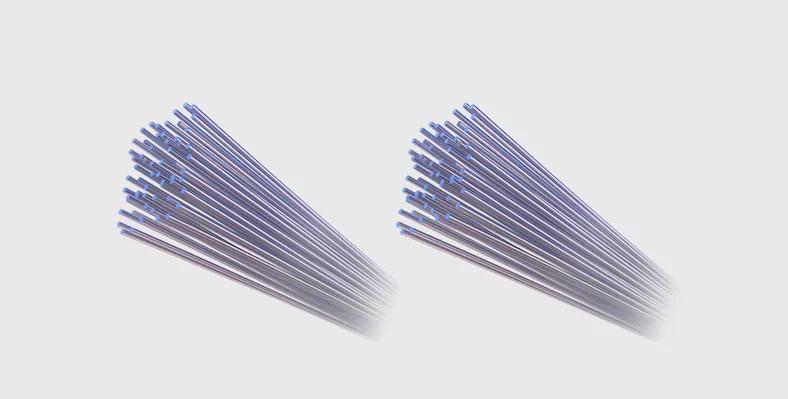
How Optical Components Work
Optical components play a fundamental role in manipulating and controlling light to achieve desired outcomes in various applications. Understanding how these components work is essential for designing and optimizing optical systems. In this section, we will delve into the principles behind the functioning of optical components, including refraction and reflection, lens equation and imaging, total internal reflection, and dispersion and diffraction.
Refraction and Reflection
Refraction is the bending of light as it passes from one medium to another with a different refractive index. This phenomenon occurs due to the change in the speed of light when it transitions from one medium to another. When light travels from a medium with a higher refractive index to a medium with a lower refractive index, it bends away from the normal line. Conversely, when light travels from a medium with a lower refractive index to a medium with a higher refractive index, it bends toward the normal line.
Optical components such as lenses and prisms utilize the principle of refraction to control the path of light. Lenses, for example, use the curved surfaces to refract light and converge or diverge it to form images. The shape and curvature of the lens determine its optical properties, allowing it to focus or spread out light rays.
Reflection, on the other hand, occurs when light encounters a boundary between two media and bounces off. The angle at which the light ray strikes the surface, known as the angle of incidence, is equal to the angle at which it reflects, known as the angle of reflection. Mirrors and other reflective surfaces are designed to maximize reflection and minimize absorption or transmission of light.
Lens Equation and Imaging
The lens equation is a fundamental equation that relates the object distance, image distance, and focal length of a lens. It is derived from the principles of refraction and the geometry of lens systems. The lens equation can be expressed as:
1/f = 1/d₀ + 1/dᵢ
where f is the focal length of the lens, d₀ is the object distance, and dᵢ is the image distance.
The lens equation allows us to determine the image distance or object distance when the other two values are known. It also provides insights into the magnification produced by the lens, which determines the size and orientation of the image formed. By manipulating the lens equation, optical engineers can design lenses with specific optical properties to achieve desired imaging characteristics.
In imaging systems, lenses are used to form clear and focused images of objects. The image formation process involves the refraction of light rays as they pass through the lens. When parallel rays of light pass through a converging lens, they converge at a specific point called the focal point. This point is determined by the curvature and refractive index of the lens. The distance from the lens to the focal point is known as the focal length.
The position and characteristics of the image formed by a lens depend on the object distance and the focal length. When the object is located beyond the focal point, a real and inverted image is formed on the opposite side of the lens. This is the case for most imaging systems, such as cameras and telescopes. Conversely, when the object is located closer to the lens than the focal point, a virtual and upright image is formed on the same side as the object. This is the case for magnifying glasses and some types of eyeglasses.
Total Internal Reflection
Total internal reflection is a phenomenon that occurs when light traveling in a medium with a higher refractive index encounters a boundary with a lower refractive index at an angle greater than the critical angle. When this condition is met, the light is completely reflected back into the higher refractive index medium, with no transmission into the lower refractive index medium. Total internal reflection is a crucial phenomenon in fiber optics and prism-based systems.
Fiber optics rely on total internal reflection to guide light along the fiber core, allowing for efficient transmission over long distances. The core of an optical fiber has a higher refractive index than the cladding, which ensures that light is confined within the core through multiple reflections. This enables high-speed data transmission, telecommunications, and medical imaging techniques such as endoscopy.
Prisms also utilize total internal reflection to redirect light. A prism is a transparent optical component with flat polished surfaces that refract and disperse light. When light enters a prism at an angle greater than the critical angle, it undergoes total internal reflection at the prism-air interface. By carefully selecting the angles and geometries of prisms, optical engineers can control the direction and path of light, enabling applications such as beam steering, spectroscopy, and optical measurement.
Dispersion and Diffraction
Dispersion is the phenomenon where different wavelengths of light separate when passing through a medium, resulting in the decomposition of white light into its spectral components. This occurs because different wavelengths of light experience different refractive indices within the medium. As a result, each wavelength is bent to a different degree, causing the colors to spread out.
Dispersion can be observed when white light passes through a prism, as the prism separates the light into a rainbow-like spectrum. This phenomenon is essential in spectroscopy, where the analysis of the spectral components can provide valuable information about the composition of light sources.
Diffraction is the bending and spreading of light waves as they encounter obstacles or apertures. It occurs due to the wave nature of light, where the light waves interfere with each other. Diffraction can be observed when light passes through a narrow slit or encounters an edge or grating. The bending and spreading of light waves result in characteristic patterns, known as diffraction patterns, which can be analyzed to understand the properties of light and the structure of objects.
Diffraction gratings are optical components that consist of a periodic structure of closely spaced parallel slits or grooves. When light passes through a diffraction grating, it diffracts into multiple orders, resulting in a series of bright and dark lines known as the diffraction pattern. Diffraction gratings are widely used in spectroscopy, where they can disperse light into its constituent wavelengths, allowing for precise wavelength measurements and spectral analysis.
By understanding the principles of dispersion and diffraction, optical engineers can design and optimize optical components to enhance imaging, control light propagation, and achieve specific spectral characteristics.
The Manufacturing Process of Optical Components
The manufacturing process of optical components involves a series of steps that ensure the production of high-quality and precise optical elements. From the selection of suitable optical materials to the final quality control measures, each stage plays a crucial role in determining the performance and reliability of optical components. In this section, we will explore the various aspects of the manufacturing process, including the selection of optical materials, shaping and polishing techniques, coating and surface finishing, and quality control measures.
Selection of Optical Materials
The choice of optical materials is a critical step in the manufacturing process of optical components. Different materials possess unique optical properties, such as refractive index, dispersion, and transmission range. The selection of the appropriate material depends on the specific requirements of the optical component and its intended application.
Glass is one of the most commonly used materials for optical components due to its excellent optical properties, stability, and durability. Borosilicate glasses, such as BK7, are widely used for visible and near-infrared applications. Silica glasses, such as fused silica, offer high transmission in the ultraviolet (UV) range and are suitable for UV-sensitive applications. Other types of glasses, such as fluoride glasses and chalcogenide glasses, are utilized for specialized applications in the infrared (IR) range.
In addition to glass, other materials such as crystals, polymers, and semiconductors are utilized for specific optical components. Crystals, such as calcium fluoride and sapphire, offer unique optical properties and are used in applications requiring high transparency and resistance to harsh environments. Polymers, on the other hand, provide flexibility and ease of fabrication, making them suitable for applications where lightweight and cost-effective solutions are required. Semiconductors, such as silicon and germanium, are utilized for their unique electrical and optical properties, enabling the integration of optical and electronic functionalities.
The choice of optical material depends on factors such as the desired spectral range, environmental conditions, mechanical stability, and manufacturing feasibility. Optical engineers consider these factors carefully to select the most suitable material for each specific application.
Shaping and Polishing Techniques
Once the appropriate optical material is selected, shaping and polishing techniques are employed to achieve the desired form and surface quality of the optical component. These techniques involve precision machining, grinding, and polishing processes that require expertise and specialized equipment.
Precision machining techniques, such as diamond turning and CNC milling, are utilized to shape the optical component to the desired geometry. These techniques involve the use of computer-controlled machines that remove material from the optical material in a precise manner. Diamond turning, for example, utilizes a diamond-tipped cutting tool to shape the optical component with high precision and accuracy.
Grinding and polishing processes are then employed to refine the shape and achieve the desired surface quality. Grinding involves the use of abrasive materials to remove material from the optical surface, while polishing utilizes finer abrasives to create a smooth and optically flat surface. These processes require careful control of parameters such as pressure, speed, and abrasive size to ensure the desired surface finish and accuracy.
The shaping and polishing techniques used in the manufacturing process contribute to the optical performance of the component. The precision and accuracy achieved during these processes directly impact factors such as surface roughness, shape accuracy, and surface figure, which are crucial for achieving optimal optical performance.
Coating and Surface Finishing
Optical components often require specialized coatings to enhance their optical performance. Coatings can improve transmission, reduce reflection, provide specific spectral characteristics, and protect the surface from environmental factors. Coating techniques such as physical vapor deposition (PVD) and chemical vapor deposition (CVD) are employed to deposit thin layers of materials onto the optical surface.
Antireflection coatings are commonly applied to reduce unwanted reflections and increase the transmission of light through the optical component. These coatings consist of multiple thin layers of dielectric materials with varying refractive indices. By carefully designing the thickness and refractive index of each layer, antireflection coatings can significantly reduce reflection losses, leading to improved optical performance.
Mirror coatings are utilized to achieve high reflectivity for specific wavelengths or spectral ranges. These coatings typically consist of metallic or dielectric layers that reflect light efficiently. Metallic mirror coatings, such as aluminum or silver, offer high reflectivity over a broad spectral range. Dielectric mirror coatings, on the other hand, provide high reflectivity at specific wavelengths or narrow spectral bands.
Surface finishing techniques, such as polishing with diamond-like carbon (DLC) coating or ion beam sputtering, can be employed to improve the surface smoothness and reduce surface defects. These techniques enhance the optical quality of the component by minimizing scattering and improving light transmission.
Quality Control and Testing
Ensuring the quality and performance of optical components is a crucial aspect of the manufacturing process. Quality control measures and testing procedures are employed to verify the specifications and performance of the components.
Various metrology techniques, such as interferometry and profilometry, are utilized to measure and characterize the optical properties of the components. These techniques can assess parameters such as surface roughness, surface figure, wavefront distortion, and transmitted or reflected wavefront quality.
Environmental testing is conducted to evaluate the performance of the components under different conditions, such as temperature and humidity variations. This testing ensures that the components can withstand the intended operating environments and maintain their optical performance over time.
In addition to optical testing, mechanical and dimensional measurements are performed to ensure that the components meet the required specifications. These measurements include dimensional accuracy, surface flatness, and alignment tolerances.
Throughout the manufacturing process, quality control measures are implemented to monitor and control the various stages, from material selection to final inspection. These measures ensure that the optical components meet the desired specifications and performance requirements.
By following a stringent manufacturing process and implementing quality control measures, optical component manufacturers can produce high-quality components with precise optical properties. These components are crucial for various applications, including telecommunications, medical devices, imaging systems, and scientific research.
Key Factors to Consider When Choosing Optical Components
When selecting optical components for a specific application, there are several key factors to consider. These factors influence the performance, compatibility, and overall suitability of the components for the intended use. By carefully evaluating these factors, one can make informed decisions and choose the most appropriate optical components. In this section, we will explore the key factors to consider when selecting optical components, including wavelength range and transmission, material properties, optical power handling, environmental stability, and cost.
Wavelength Range and Transmission
One of the most critical factors to consider when choosing optical components is the wavelength range and transmission characteristics. Different optical components have specific transmission properties, which determine the range of wavelengths they can effectively transmit or manipulate. It is essential to ensure that the selected components are compatible with the wavelengths of interest in the application.
For example, optical lenses and filters are designed to operate optimally within specific wavelength ranges. Lenses may have different refractive indices and dispersion properties for different wavelength ranges, affecting their performance. Filters, on the other hand, have transmission characteristics that can be tailored to specific wavelength ranges, allowing for the selective transmission or blocking of certain wavelengths.
When selecting optical components, it is crucial to verify their transmission characteristics and ensure that they align with the desired wavelength range for the application. This consideration is particularly important in applications such as spectroscopy, telecommunications, and laser systems, where precise control over the wavelength range is critical.
Material Properties
The material properties of optical components play a vital role in their performance and suitability for specific applications. Different materials exhibit unique optical properties, such as refractive index, dispersion, and transmission range. It is essential to select materials that align with the requirements of the application.
For instance, the choice of optical lenses depends on factors such as the refractive index, Abbe number (a measure of dispersion), and transmission characteristics of the material. Different lens materials offer varying levels of performance in terms of chromatic aberration, imaging quality, and transmission efficiency.
Similarly, the choice of mirrors, prisms, and filters depends on the material properties. Mirrors may use different metallic or dielectric coatings to achieve high reflectivity, and the choice of coating material affects the reflectance across different wavelength ranges. Prisms are available in various materials, each with its unique refractive index and dispersion characteristics. Filters utilize specific materials and coatings to achieve the desired spectral transmission or blocking properties.
By understanding the material properties and their impact on optical performance, one can select the appropriate materials for specific applications. Considerations such as spectral range, environmental compatibility, and mechanical stability should guide the material selection process.
Optical Power Handling
Optical power handling refers to the ability of an optical component to handle the intensity of light without excessive heat generation or degradation of performance. The optical power handling capability is particularly crucial in applications involving high-power lasers or intense light sources.
Different optical components have varying power handling limits, which depend on factors such as the material properties, coating specifications, and design considerations. It is essential to ensure that the selected components can handle the optical power levels associated with the application without introducing excessive losses or damage.
When selecting optical components for high-power applications, factors such as thermal management, absorption characteristics, and coatings designed for high-power operation should be taken into account. Manufacturers often provide specifications related to the maximum power levels that their components can handle. These specifications should be carefully considered to ensure the components can operate safely and reliably in the intended application.
Environmental Stability
The environmental stability of optical components is a crucial consideration, particularly in applications where the components may be exposed to varying temperature, humidity, or mechanical stress conditions. Environmental factors can affect the performance, reliability, and longevity of optical components.
Thermal stability is an important consideration, as changes in temperature can cause dimensional changes or introduce optical aberrations. Materials with low coefficients of thermal expansion are preferred to minimize the impact of temperature variations on the performance of the components.
Humidity and moisture can also adversely affect the performance of optical components, particularly those with sensitive coatings or materials. It is important to select components with appropriate protective measures, such as hermetic sealing or moisture-resistant coatings, to ensure long-term performance in humid environments.
Mechanical stability is another consideration, particularly in applications where components may be subject to vibrations, shocks, or mechanical stress. Optomechanical designs and mounting techniques should be chosen to ensure the stability and alignment of the components under such conditions.
By considering the environmental stability of optical components, one can ensure their performance and reliability in the intended application, even under challenging environmental conditions.
Cost
Cost is an important factor to consider when selecting optical components, as it impacts the overall feasibility and budget of the project. The cost of optical components can vary significantly depending on factors such as the complexity of the design, the materials used, the manufacturing processes involved, and the desired performance specifications.
It is important to strike a balance between the desired optical performance and the available budget. Optics manufacturers often provide a range of options, including off-the-shelf components and custom-designed solutions. Off-the-shelf components can offer cost-effective solutions for standard applications, while custom-designed components may be necessary for unique or specialized requirements.
Careful consideration should be given to the cost-performance trade-offs, ensuring that the selected components meet the required specifications without exceeding the available budget.
By carefully evaluating these key factors – wavelength range and transmission, material properties, optical power handling, environmental stability, and cost – one can make informed decisions when selecting optical components for specific applications. Each factor contributes to the overall performance, compatibility, and suitability of the components, ensuring optimal performance in the intended use.
The Impact of Optical Components in Various Industries
Optical components have a significant impact on various industries, revolutionizing technologies and enabling advancements in fields such as telecommunications, medicine, astronomy, imaging, and industrial manufacturing. The unique properties and functionalities of optical components play a crucial role in these industries, allowing for the manipulation, transmission, and detection of light. In this section, we will explore the specific applications and contributions of optical components in different industries.
Telecommunications
The telecommunications industry heavily relies on optical components for the transmission and routing of high-speed data. Optical fibers, which are thin strands of transparent material, are the backbone of modern telecommunications networks. They enable the long-distance transmission of data using light signals, providing high bandwidth and low loss. Optical components such as lasers, modulators, detectors, and amplifiers are used to generate, manipulate, and detect light signals in optical communication systems. These components allow for efficient data transmission, enabling high-speed internet, fiber-optic networks, and long-distance communication.
Medicine and Biomedical Imaging
In the field of medicine, optical components play a crucial role in various diagnostic and imaging techniques. Optical lenses, filters, and mirrors are used in medical imaging systems such as endoscopes, microscopes, and ophthalmic devices. These components enable high-resolution imaging, allowing healthcare professionals to visualize internal structures and diagnose medical conditions. Optical fibers are utilized in medical devices for minimally invasive procedures, providing flexible light delivery and imaging capabilities. Optical components also find applications in laser surgery, photodynamic therapy, and optical sensing for biomedical research.
Astronomy and Space Exploration
Optical components are essential in astronomy and space exploration, enabling scientists to observe celestial objects and study the universe. Telescopes and astronomical instruments utilize lenses, mirrors, and prisms to collect, focus, and analyze light from distant objects. These components allow astronomers to capture high-resolution images, measure the properties of celestial bodies, and study their spectral characteristics. Optical components are also used in space-based telescopes and satellites, providing valuable data for scientific research and space exploration missions.
Imaging and Photography
Optical components play a critical role in imaging and photography, enabling the capture and manipulation of light to create visual representations of the world. Camera lenses, filters, and mirrors are used to focus light, control exposure, and enhance image quality. High-quality optical components are essential for achieving sharpness, clarity, and accurate color reproduction in photographs. Advances in optical technology have led to the development of sophisticated lenses with features such as image stabilization, autofocus, and wide aperture capabilities, enhancing the capabilities of modern cameras.
Industrial and Manufacturing
In industrial and manufacturing applications, optical components are utilized for quality control, measurement, and precision processes. Optical components such as lenses, prisms, and filters are used in machine vision systems for automated inspection and measurement. These components enable precise imaging, pattern recognition, and defect detection in manufacturing processes. Optical fibers and sensors are employed for non-contact measurements, temperature sensing, and process monitoring. Optical components also find applications in laser material processing, lithography, and spectroscopy, enabling precise material characterization and analysis.
The impact of optical components in these industries extends beyond the mentioned applications, with diverse applications and advancements continuously emerging. Optical components enable technologies such as virtual reality, augmented reality, 3D sensing, and autonomous vehicles, driving innovation in various sectors. The continuous development of optical components and the integration of photonics technology are paving the way for new possibilities and advancements in a wide range of industries.
Future Trends in Optical Components
The field of optical components is continuously evolving, driven by technological advancements and emerging applications. Future trends in optical components are shaping the way we harness and manipulate light, enabling new possibilities in various industries. In this section, we will explore some of the key future trends in optical components, including miniaturization and integration, metamaterials and nanophotonics, multifunctional and adaptive components, quantum optics and computing, and advances in coating and surface engineering.
Miniaturization and Integration
One of the key trends in optical components is the miniaturization and integration of optical systems. As technology advances, there is a growing demand for compact and lightweight optical components that can be seamlessly integrated into various devices and systems. Miniaturization allows for the development of portable and wearable devices with advanced optical functionalities. Integrated optical systems enable the combination of multiple optical components into a single platform, reducing complexity and improving performance. This trend opens up new possibilities in fields such as biomedical devices, consumer electronics, and optical sensing.
Metamaterials and Nanophotonics
Metamaterials and nanophotonics are emerging areas in the field of optical components, offering unique properties and functionalities beyond what is possible with conventional materials. Metamaterials are engineered materials with properties that are not found in nature, such as negative refractive index or unusual light-matter interactions. These materials enable the development of novel optical components with unprecedented capabilities, such as superlenses for subwavelength imaging and cloaking devices.
Nanophotonics focuses on the study and manipulation of light at the nanoscale, utilizing structures and materials with dimensions on the order of nanometers. This field enables the development of compact and efficient optical components, such as nanoscale waveguides, plasmonic devices, and nanoscale light sources. Nanophotonics holds promise for applications in information technology, communication systems, and high-resolution imaging.
Multifunctional and Adaptive Components
The development of multifunctional and adaptive optical components is another significant trend in the field. These components possess the ability to perform multiple functions or adapt their properties in response to external stimuli. By integrating smart materials, such as electro-optic or magneto-optic materials, into optical components, functionalities such as tunability, switching, and reconfigurability can be achieved. This trend enables the development of flexible and adaptable optical systems that can dynamically respond to changing conditions or user requirements. Applications include reconfigurable optics, adaptive optics, and dynamic optical filters.
Quantum Optics and Computing
Quantum optics and quantum computing are rapidly advancing fields that are expected to have a profound impact on optical components. Quantum optics explores the behavior of light and its interaction with matter at the quantum level. Optical components play a crucial role in quantum communication, quantum cryptography, and quantum information processing. The development of optical components with precise control over quantum states, such as single-photon sources, photonic quantum gates, and quantum memories, is crucial for the realization of practical quantum technologies.
Quantum computing utilizes the principles of quantum mechanics to perform computation with significantly higher processing power than classical computers. Optical components, such as photonic integrated circuits and optical qubits, are being explored as building blocks for quantum computers. Advances in optical component design and fabrication techniques are essential for the development of scalable and reliable quantum computing systems.
Advances in Coating and Surface Engineering
Coating and surface engineering play a critical role in the performance and durability of optical components. Advances in coating technologies, such as advanced dielectric coatings and metamaterial-based coatings, are enabling higher reflectivity, lower losses, and improved spectral control. These coatings enhance the performance of optical components in terms of transmission, reflection, and durability, enabling applications in high-power lasers, imaging systems, and precision optics.
Surface engineering techniques, such as nanostructuring and surface functionalization, are being explored to control the interaction of light with surfaces at the nanoscale. These techniques enable the design of surfaces with specific optical properties, such as enhanced light trapping, antireflection, or self-cleaning capabilities. Surface engineering advances are driving improvements in optical component performance, leading to enhanced light management and improved overall system efficiency.
These future trends in optical components highlight the continuous advancements and exciting possibilities in the field. As research and development efforts continue, optical components will play an increasingly essential role in various industries, enabling new technologies, enhancing performance, and expanding the boundaries of what is possible with light.
Conclusion
In conclusion, optical components are fundamental elements in the field of photonics, enabling the generation, manipulation, and detection of light. This comprehensive guide has provided an in-depth understanding of various types of optical components, their working principles, manufacturing processes, key selection factors, and their impact in different industries. By keeping up with future trends, innovations, and emerging applications, the field of optical components continues to push the boundaries of technology, opening new doors for advancements in various fields.

